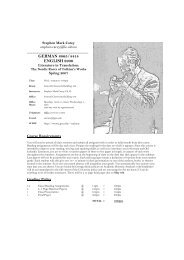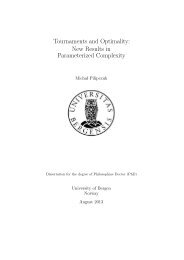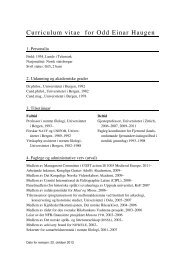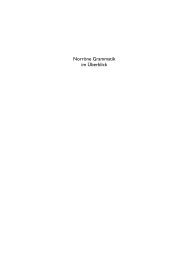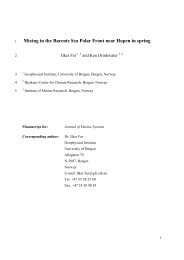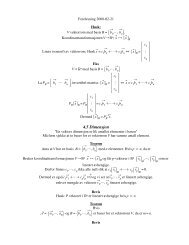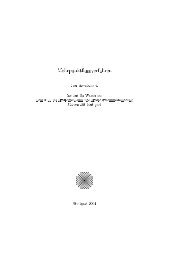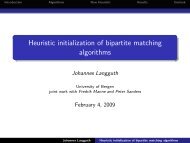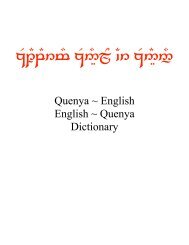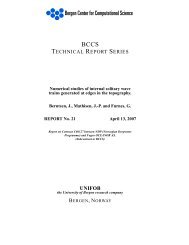Rational Curves in Calabi-Yau Threefolds
Rational Curves in Calabi-Yau Threefolds
Rational Curves in Calabi-Yau Threefolds
Create successful ePaper yourself
Turn your PDF publications into a flip-book with our unique Google optimized e-Paper software.
3926 Johnsen and Knutsen<br />
This theorem will be proved <strong>in</strong> several steps. The fact that a general<br />
section is smooth follows from Bert<strong>in</strong>i’s theorem, and s<strong>in</strong>ce the divisor is<br />
anti-canonical and of dimension 3, it will be a <strong>Calabi</strong>-<strong>Yau</strong> threefold. Here<br />
are the ma<strong>in</strong> steps <strong>in</strong> the proof of the statement about the existence of an<br />
isolated curve as described:<br />
(I) Set g :¼ e1 þ e2 þ e3 þ 2. Us<strong>in</strong>g lattice-theoretical considerations<br />
we f<strong>in</strong>d a (smooth) K3 surface S <strong>in</strong> P g with Pic S ’ ZH ZD ZG,<br />
where H is the hyperplane section class, D is the class of a smooth<br />
elliptic curve of degree 3 and G is a smooth rational curve of bidegree<br />
(d, a). Let T ¼ T S be the 3-dimensional scroll <strong>in</strong> P g swept out by the l<strong>in</strong>ear<br />
spans of the divisors <strong>in</strong> jDj on S. The rational normal scroll T will be of<br />
maximally balanced type and of degree e 1 þ e 2 þ e 3.<br />
(II) Embed T ¼ P(OP 1(e1) OP 1(e2) OP 1(e3)) (<strong>in</strong> the obvious way)<br />
<strong>in</strong> a 4-dimensional scroll T ¼ P(O P 1(e 1) O P 1(e 4)) of type (e 1, ...,<br />
e 4). Hence T corresponds to the divisor class H e 4F <strong>in</strong> T, and S corresponds<br />
to a ‘‘complete <strong>in</strong>tersection’’ of divisors of type H e4F and<br />
3H (g 4)F on T. We now deform the complete <strong>in</strong>tersection <strong>in</strong> a<br />
rational family (i.e., parametrized by P 1 ) <strong>in</strong> a general way. For ‘‘small<br />
values’’ of the parameter we obta<strong>in</strong> a K3 surface with Picard group of<br />
rank 2 and no rational curve on it.<br />
(III) Take the union over P 1 of all the K3 surfaces described <strong>in</strong> (II).<br />
This gives a threefold V, which is a section of the anti-canonical divisor<br />
4H (g 4 þ e4)F ¼ 4H (N 5)F on T. For a general complete<br />
<strong>in</strong>tersection deformation the threefold will have only f<strong>in</strong>itely many s<strong>in</strong>gularities,<br />
none of them on G. Then G will be isolated on V.<br />
(IV) Deform V as a section of 4H (g 4 þ e4)F ¼ 4H (N 5)F<br />
F on T. Then a general deformation W will be smooth and have an isolated<br />
curve GW of bidegree (d, a).<br />
This strategy is analogous to the one used <strong>in</strong> Clemens (1983) to show<br />
the existence of isolated rational curves of <strong>in</strong>f<strong>in</strong>itely many degrees <strong>in</strong> the<br />
generic qu<strong>in</strong>tic <strong>in</strong> P 4 , and <strong>in</strong> Ekedahl et al. (1999) to show the existence of<br />
isolated rational curves of bidegree (d, 0) <strong>in</strong> general complete <strong>in</strong>tersection<br />
<strong>Calabi</strong>-<strong>Yau</strong> threefolds <strong>in</strong> some specific biprojective spaces.<br />
Step (I) will be proved <strong>in</strong> Secs. 5 and 6, and Steps (II)–(IV) <strong>in</strong> Sec. 6.<br />
4.1. F<strong>in</strong>iteness Questions<br />
Let us say a few words about f<strong>in</strong>iteness. Let T be a rational, normal<br />
scroll of dimension 4 <strong>in</strong> P N . A divisor of type 4H (N 5)F corresponds



